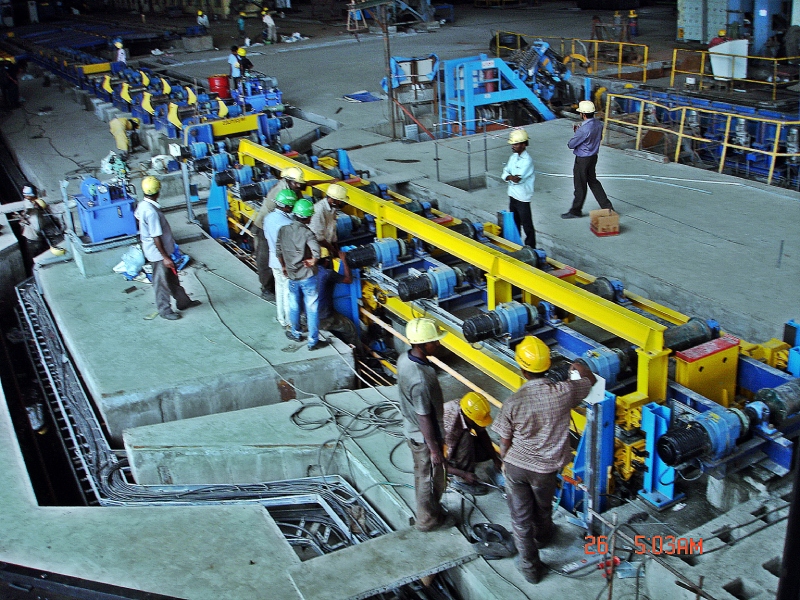Online Inspection of Billets and Rounds in Steel Manufacturing
Introduction
Online inspection of billets and rounds is a critical process in steel manufacturing, ensuring the quality, dimensional accuracy, and integrity of semi-finished products before they proceed to further processing or final use. This inspection process employs advanced technologies and automated systems to detect surface defects, measure dimensions, and verify compliance with specifications in real-time.
Importance of Online Inspection
1. Quality Assurance: Ensures that billets and rounds meet stringent quality standards by detecting surface defects such as cracks, laps, seams, and surface irregularities early in the production process.
2. Dimensional Accuracy: Measures the dimensions of billets and rounds accurately to ensure they conform to specified tolerances and customer requirements.

3. Process Optimization: Provides immediate feedback to operators and production managers, allowing for timely adjustments to manufacturing processes to enhance product quality and consistency.
4. Cost Reduction: Reduces scrap and rework costs by identifying defects early, minimizing material wastage and improving overall production efficiency.
5. Compliance and Traceability: Ensures compliance with regulatory standards and customer specifications, providing traceable records of inspection results for quality control and auditing purposes.
Technologies Used in Online Inspection
1. Surface Inspection Systems: Utilize advanced imaging technologies such as high-resolution cameras and sensors to detect surface defects and imperfections.
2. Dimensional Measurement Systems: Employ laser-based or optical measurement techniques to accurately measure dimensions such as diameter, length, and straightness.
3. Ultrasonic Testing (UT): Utilizes ultrasonic waves to detect internal defects such as voids, inclusions, and segregation within billets and rounds.
4. Eddy Current Testing (ECT): Detects surface and near-surface defects and variations in material properties using electromagnetic induction.
5. Automated Data Analysis: Integrates software algorithms for real-time data processing, defect classification, and generation of inspection reports.
Operational Workflow
1. Inspection Setup: Billets and rounds are conveyed through an inspection station equipped with sensors, cameras, and measurement devices.
2. Data Acquisition: Surface images, dimensional measurements, and test results are captured and transmitted to a central control system.
3. Analysis and Decision Making: Inspection data is analyzed in real-time to identify defects, measure dimensions, and assess compliance with quality standards.
4. Feedback and Control: Feedback is provided to operators and automated systems to adjust production parameters and maintain product quality.
5. Reporting and Documentation: Comprehensive inspection reports and quality certificates are generated, documenting inspection results and ensuring traceability.
Applications in Steel Manufacturing
Online inspection of billets and rounds is applied in various stages of steel manufacturing, including:
- Primary Production: Ensuring quality in continuous casting processes.
- Secondary Metallurgy: Verifying quality after refining and treatment processes.
- Semi-Finished Products: Inspecting billets and rounds before they are further processed into finished products.
Conclusion
Online inspection of billets and rounds is essential for maintaining high-quality standards, optimizing production processes, and ensuring customer satisfaction in steel manufacturing. By leveraging advanced inspection technologies and automated systems, steel producers can achieve superior product quality, reduce costs, and enhance overall operational efficiency. EVO TECH's commitment to integrating cutting-edge inspection solutions ensures that steel manufacturers benefit from reliable, accurate, and efficient online inspection capabilities throughout their production facilities.


